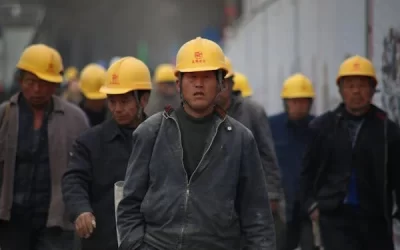For any structure to last a long time and maintain its structural integrity, maintenance is a must. Regular upkeep and timely repairs can prevent costly damage, extend the life of the roof, and ensure a safe environment for occupants. This comprehensive guide will walk you through the best practices for commercial roof maintenance and repairs, helping you protect your investment and avoid unexpected expenses.
Local Experts
Hiring local experts for your commercial roof maintenance and repairs can significantly benefit your building’s longevity and performance. Local professionals possess in-depth knowledge of the regional climate and environmental factors that affect roofing materials. Additionally, they are familiar with local building codes and standards, ensuring compliance with regulations. Whether you need a commercial roofer in Boise or New York City, hiring local experts is always a wise decision. This way, you can rest assured that your roof is in the hands of skilled professionals who understand the unique needs and challenges of your area. Just make sure to do your research and choose a reputable company with a proven track record of quality work.
Common Roofing Issues and How to Identify Them
Understanding common roofing issues is crucial for timely identification and resolution, which helps to maintain the roof’s integrity and avoid expensive repairs. One prevalent problem is water leakage, which can stem from various sources such as damaged flashing, clogged gutters, or deteriorating seals around roof penetrations. These leaks often manifest as water stains on ceilings or walls, signaling that immediate attention is required to prevent structural damage and mold growth.
Another common issue is roof membrane wear and tear, which may result from prolonged exposure to the elements. Signs such as blistering, cracking, or punctures indicate that the membrane has compromised its protective layer and needs inspection and repair. Additionally, pooling water on a flat roof can suggest drainage problems or structural issues that must be addressed promptly to avoid further deterioration.
Thermal expansion and contraction over time can lead to loosened or damaged roof materials. This movement can cause the roof to exhibit visible signs of distress, such as warped or buckled surfaces. Regular inspection and maintenance can help detect these issues early, ensuring the roof remains secure and functional. Understanding these common roofing problems and their telltale signs can empower building owners and managers to take proactive measures, and ensure the roof’s longevity and optimal performance.
Preventative Maintenance Tips
To keep your commercial roof in top condition, adopting a proactive approach with regular preventative maintenance is essential. This means scheduling consistent inspections to catch small problems before they escalate into costly repairs. During these inspections, trained professionals can examine all components of the roof, from the membrane and flashing to the gutters and drainage systems, ensuring they are functioning correctly. It’s also beneficial to keep the roof clear of debris, which can block drainage pathways and lead to water pooling.
In addition to these inspections, owners should ensure that their roof undergoes periodic cleaning to remove dirt, leaves, and other materials that can cause deterioration over time. Keeping the roof free of overhanging tree limbs can prevent damage caused by falling branches or accumulated organic matter. It’s equally important to ensure that any rooftop equipment, like HVAC units or vents, is properly sealed and maintained to prevent leaks. Finally, addressing minor repairs immediately can prevent more significant issues down the line, ensuring the roof remains durable and effective in protecting your building.
DIY vs. Professional Maintenance and Repairs
When considering roof maintenance and repairs, building owners often face the decision of whether to take a DIY approach or enlist professional services. DIY maintenance can seem cost-effective and appealing for those with some level of technical skill. Small tasks such as clearing debris from gutters, trimming overhanging branches, or conducting a visual inspection for obvious damage are generally manageable for most owners. This hands-on approach can save money in the short term and offers immediate responsiveness to minor issues.
However, the complexity and potential risks associated with more significant roofing tasks often necessitate professional intervention. Trained roofing experts bring specialized knowledge, tools, and safety equipment that are crucial for addressing complicated issues like membrane damage, structural repairs, or significant leaks. Professionals can diagnose underlying problems that may not be immediately apparent to an untrained eye, ensuring comprehensive and lasting solutions. Ultimately, balancing minor DIY tasks and knowing when to call in the experts can create an effective maintenance strategy, safeguarding the roof’s structural integrity and longevity.
Commercial roof maintenance and repairs are critical for the safety, functionality, and longevity of any building. By hiring local experts, understanding common roofing problems, implementing preventative measures, and knowing when to call in professional help, owners can ensure their investment remains secure and protected over time. Regular upkeep and timely repairs not only save money in the long run but also provide peace of mind that your building is in good hands. By following these best practices, you can maintain a healthy commercial roof that stands strong against weather elements for years to come.





